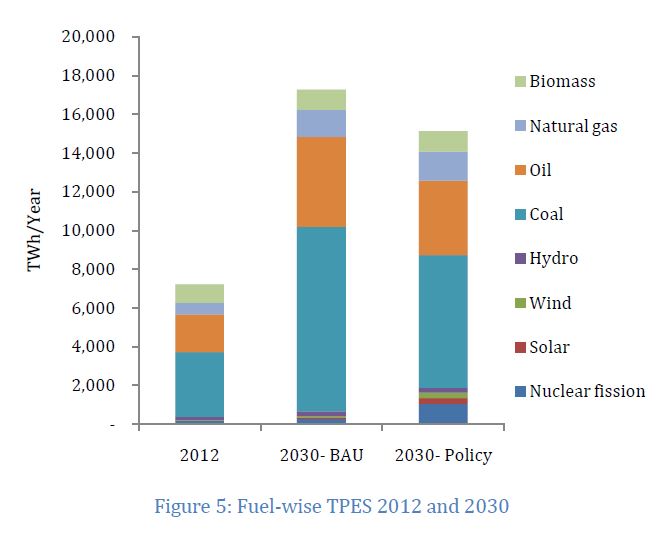CStep’s interim report ‘A Sustainable Development Framework for India’s Climate Policy’ could help Indian and other developing countries’ negotiators at the Climate Summit in Paris in December As a large developing country, India’s challenge is to meet its development aspirations in a carbonconstrained world. This study, undertaken by the Centre for Study of Science Technology and Policy (CSTEP) uses Sustainable Development (SD) as the overarching framework and aims at equitable access to energy, clean air and water, food, health and livelihoods and economic growth.
The study connects elements of SD in an integrated bottom-up approach to understand the implications for economy, energy trajectories, emissions and costs. Any reduction of CO2 is treated as a co-benefi t of the framework.
The present study is an initial assessment of such an analysis and focuses on three objectives: (1) Energy security, meaning that the energy system should not be vulnerable to potential fuel supply disruptions, (2) Inclusivity, which ensures access to energy services for all and, (3) Environment, which implies that the pollutant emissions are within reasonable limits to avoid high risk of mortality and morbidity.
The analysis develops two scenarios: Business-as- Usual (BAU) and Policy scenario, which achieves the objectives of SD mentioned above. The results suggest that India’s present energy demand of about 5,000 TWh is expected to increase to about 12,500 TWh in 2030 under BAU. This reduces to about 10,000 TWh under the Policy scenario, mostly through the adoption of energy effi cient technologies and processes across all sectors. The share of fossil-free sources (excluding non-commercial biomass), which is presently about 4%, increases to 13% in the Policy scenario.
The electricity demand in 2030 is expected to be about 3,000 TWh. In the Policy scenario, fossil-free sources, (solar, wind, biomass, hydro and nuclear)contribute at least 40% of total generation by 2030 (this is 23% at present). Renewable sources contribute about 20% of electricity generated (6% at present).
The Policy scenario in 2030 shows a signifi cant increase in the deployment of fossil-free sources of energy. It’s important to note that such a transition is driven by the objective of sustainable development, in particular ensuring energy security and improving air quality. In the process, the lowering of CO2 emissions is achieved as a co-benefit.
Given these results, we believe that India has an opportunity to carve out a unique developmental trajectory that ensures quality of life for all its citizens when guided by the aspirations of energy security, clean air and a shift to sustainable development. These transformations take place without imposing any restrictions on CO2 emissions, but nevertheless generate lower CO2 emissions. This study’s framework could serve as an alternative development paradigm for India and other developing countries. It could also be India’s distinctive contribution at the Conference of Parties (COP-21) meeting in Paris in December 2015.










